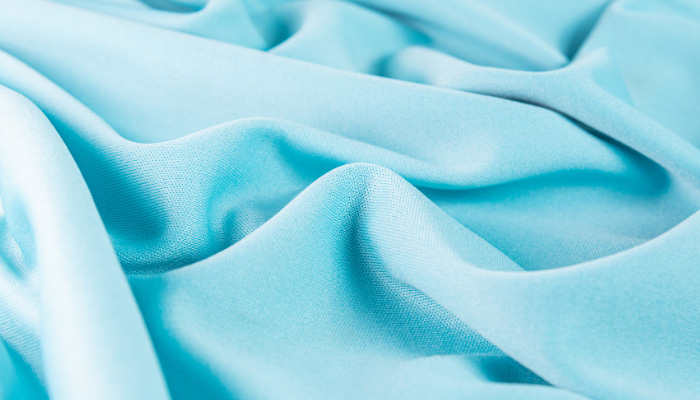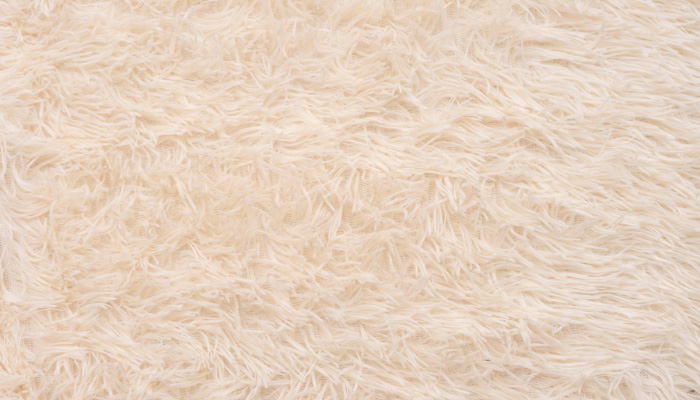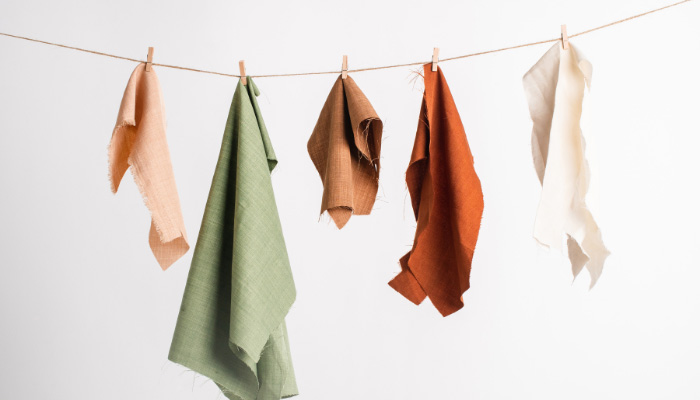The fashion industry is incredibly harmful to the planet, being second only behind the petroleum industry. The industry is one of the world's largest polluters, accounting for 20 percent of global industrial water pollution.
To one's surprise, most clothes are made of plastic, creating a microplastic disaster during manufacturing. In addition, textile mills worldwide use thousands of hazardous chemicals that are dangerous to the environment and those who work with them. It's high time for a global shift in the industry towards sustainable fashion.
Understanding Sustainable Fashion
Sustainable fashion is an all-encompassing term for products, processes, activities, and stakeholders like policymakers, brands, and consumers. Sustainability in fashion isn't just about textiles or products. It touches the entire product lifecycle process, including how clothing is produced, consumed, and disposed of in landfills.
Science points to an inevitable climate crisis that demands urgent action. Climate change is already affecting all living systems around the globe. These impacts affect natural systems and have pervasive consequences for humans, such as food shortages and lack of access to clean water.
The good news is that these impacts can be reduced if we adapt and make changes. Sustainability is a necessary way to create these changes.
What fabrics are environmentally friendly?
As a fashion consumer, you may be concerned about sustainability and the impact of clothing on the environment. Luckily, there are many environmentally friendly fabrics available in the market that are both fashionable and sustainable. In the following list, we will introduce you to some of these eco-friendly fabrics.
| Natural and sustainable clothing fabrics |
|---|
| Organic cotton |
| Recycled cotton |
| Hemp |
| Linen |
| Bamboo |
| Cork |
| Sustainable semi-synthetic clothing fabric |
|---|
| Viscose |
| Modal |
| Cupro |
| Lyocell |
| Recycled synthetic sustainable clothing fabrics |
|---|
| Recycled polyester |
| Recycled Nylon |
| Biobased plastics |
| Recycled elastance |
| Potentially-sustainable natural animal fabrics |
|---|
| Sheep wool |
| Merino wool |
| Alpaca wool |
| Cashmere |
| Camel |
| Yak wool |
| Vegetable tanned leather |
| Down |
| Silk |
As a fashion consumer, you may be concerned about sustainability and the impact of clothing on the environment. Luckily, there are many environmentally friendly fabrics available in the market that are both fashionable and sustainable. In the following list, we will introduce you to some of these eco-friendly fabrics.
Natural and Sustainable Clothing Fabrics


Those who want sustainable and eco-friendly materials in their clothing and home textiles often prefer these plant-based fabrics.
-
Organic Cotton
Organic Cotton is a type of cotton that is grown without the use of synthetic fertilizers or pesticides. It is a sustainable and eco-friendly alternative to conventional cotton. -
Recycled Cotton
Recycled cotton is an eco-friendly fabric made by collecting and processing cotton scraps and waste materials from textile and garment production. These scraps are sorted, cleaned, and broken down into fibers, then spun into new yarns for fabric production. -
Hemp
This is a durable and eco-friendly fabric made from the hemp plant's fibers. It requires minimal pesticides and herbicides to grow and is biodegradable. -
Linen
This is a natural fabric made from the fibers of the linen plant. It is lightweight, breathable, and eco-friendly, requiring less water and pesticides to grow than cotton. -
Bamboo
This is a sustainable and eco-friendly fabric made from the pulp of bamboo plants. It is lightweight, soft, and breathable and requires minimal water and pesticides to grow. -
Cork
This natural and sustainable material is harvested from the bark of cork oak trees. Cork has many desirable properties, including lightweight, durable, and waterproof. It is commonly used in the fashion industry as a sustainable alternative to leather, as it has a similar texture and appearance. It is also used in accessories such as bags, wallets, and shoes.
Recycled Synthetic Sustainable Clothing Fabrics


-
Recycled Polyester
This type of polyester is made from recycled materials such as plastic bottles. It reduces the amount of waste in landfills and saves energy by reducing the need for new polyester production. -
Recycled Nylon
Recycled Nylon is a type of nylon fabric made from pre-consumer or post-consumer waste, such as fishing nets, carpet fibers, and industrial plastic scraps. The waste materials are collected, cleaned, and processed to create a new nylon fiber, which can be used to create sustainable and eco-friendly fabric for clothing and accessories. It reduces the amount of waste in landfills and oceans. Also, it helps to reduce carbon footprint, as it requires less energy to produce and transport than traditional nylon. -
Biobased Plastics
Biobased plastics are a type of plastic that is made from renewable resources, such as plant-based materials, instead of non-renewable fossil fuels. They are also known as bioplastics. Biobased plastics can be produced using a variety of feedstocks, including corn, sugarcane, potatoes, and even algae. However, it is important to note that not all biobased plastics are biodegradable. Some biobased plastics, such as bio-PE (polyethylene) and bio-PET (polyethylene terephthalate), are made from renewable sources but are not biodegradable. -
Recycled Elastance
Recycled elastane is a type of elastic fiber made from recycled materials. It is commonly used in clothing and apparel to provide stretch and flexibility to the fabric. Recycled elastic yarn is recovered from the waste of normal elastic yarn production.
Sustainable Semi-synthetic Clothing Fabric


-
Viscose
Viscose is a type of fabric made from natural cellulose fibers. It is a soft, lightweight fabric that is commonly used in dresses and blouses. Viscose is eco-friendly as it is made from renewable resources and can be produced with minimal environmental impact. -
Modal
This is a type of fabric made from cellulose. It is a sustainable alternative to traditional fabrics like cotton and polyester, requiring less water and chemicals. -
Cupro
This is a regenerated cellulose fiber. It is a silky, breathable fabric often used for linings, dresses, and suits. Cupro is eco-friendly, made from recycled materials, and requires less water and energy than traditional fabrics. -
Lyocell
Lyocell fabric is made from natural cellulose fibers, such as wood pulp. It is a soft, breathable fabric commonly used in activewear, bedding, and dresses. Lyocell is eco-friendly as it is made from renewable resources and can be produced with minimal environmental impact. Additionally, the closed-loop manufacturing process used to make lyocell ensures that waste is minimized and chemicals are recycled.
Potentially-Sustainable Natural Animal fabrics


-
Sheep Wool
This is a natural fiber obtained from the fleece of sheep. It is warm, durable, and moisture-wicking, making it a popular choice for clothing and textiles. -
Merino Wool
This is a type of sheep wool that comes from Merino sheep. It is known for its softness, warmth, and moisture-wicking properties and is commonly used in high-performance athletic wear. -
Alpaca Wool
This is a natural fiber obtained from the fleece of alpacas. It is soft, lightweight, and hypoallergenic, making it a popular choice for clothing and accessories. -
Cashmere
This is a luxury fiber obtained from the soft undercoat of cashmere goats. It is known for its softness, warmth, and lightweight feel. -
Camel
This is a natural fiber obtained from the hair of camels. It is warm, durable, and moisture-wicking, making it a popular choice for outerwear fabrics and blankets. -
Yak Wool
This is a natural fiber obtained from the hair of yaks. It is warm, lightweight, and breathable, making it a popular choice for clothing and textiles. -
Vegetable Tanned Leather
This type of leather is tanned using natural materials such as tree bark. It is a sustainable alternative to conventional leather, often tanned using toxic chemicals. -
Down
This is a natural insulation material obtained from the soft feathers of ducks and geese. It is warm, lightweight, and compressible, making it a popular choice for outerwear. -
Silk
This is a natural fiber obtained from the cocoon of the silkworm. It is soft, lightweight, and breathable, making it a popular choice for clothing and bedding.
Choosing Sustainable Fabrics
Thousands of companies are transitioning to sustainable fabrics, which might inspire you to take action. Some of the most important advantages are listed below:
Environmental benefits
The obvious benefit is that choosing natural and recycled materials will reduce your carbon footprint. Brands are responsible because they use far more materials than individual consumers. Sustainable fabrics should be the next step if you are using greener energy sources and related concepts.
Skin-friendly
Some natural and sustainable fabrics use organic farming methods that don't use pesticides and fertilizers. It also avoids using harmful chemicals at various stages of cloth manufacturing. This makes sustainable fabrics skin-friendly and good for our health.
Reduce waste
Suppose it is difficult to choose environmentally friendly materials to buy. In that case, it is better to choose products that can be used for a long time, which can reduce purchases and reduce disposal. You will easily save money in the long run because your clothes will last longer.
Building a Sustainable Wardrobe
When creating a sustainable wardrobe, you have several directions, for example.
Consider selecting alternative materials
Recycled synthetic material, bio-based synthetic material,organic material, and animal-friendly source material are all eco-friendly materials that often be used in alternative apparel. By recognizing recycled certifications such as BCI, OCS, GOTS, GRS, RCS, RDS, and RWS, customers can easily understand whether their products are eco fabrics. There are some advantages to choosing this kind of fabric.
- Minimize harmful impacts on crop protection measures
- Efficient water use and water resource protection
- Focus on soil health
- Protect natural habitats
- Promoting decent work
Choose a durable fabric
To improve sustainability and reduce your organization's carbon, water, and waste footprints, it's important to prioritize material selection over quantity. Choosing higher-quality textiles can help extend the lifespan of a piece of clothing. By using longer-lasting, durable, and less resource-intensive materials in your products, you can reduce the number of product returns and the need for repairs while also increasing the value of your brand to consumers.
Choose garments that are easy to recycle
Manufacturers can use recycled materials to create eco-friendly clothing throughout the textile crafting process. Some fabrics can be made from pineapple, bamboo, coffee grounds, waste fishing nets, or plastic bottles. To ensure sustainability during the dyeing process, they can use eco-friendly chemicals.
Regarding post-processing, selecting a sustainable membrane like recycled PU/TPU membrane, biobased membrane, or recycled TPEE can provide the same functions as traditional membranes while reducing environmental impact. By choosing these materials, they can improve the efficiency of clothing recycling in the future.
Caring for Your Sustainable Wardrobe
There are some tips for caring for your sustainable wardrobe to extend its lifespan, including:
- You can maintain the function of your clothes by washing them less frequently. This is because the function of clothes reduces gradually after several washes. Another way to reduce your environmental impact is to choose eco-friendly detergents. By doing so, you can lessen the burden on the environment while still keeping your clothes clean.
- If you want to preserve the texture of your clothes, it's better to air-dry them instead of using a dryer, especially when it's hot, and the clothes are being squeezed. High temperatures and pressure can easily damage the fabric's texture.
- Instead of replacing your clothes when they have flaws, consider repairing them first. You can visit an apparel shop to fix any issues. Doing so can reduce excessive waste and lessen the environmental burden.
- If you want to extend the lifespan of your clothes and prevent damage, it's important to store them properly. Make sure your clothes are dry, clean, and tidy before putting them away to wear them again in the future.
Conclusion
Sustainable brands are essential in shaping how the industry can improve its practices, reduce environmental harm, and support garment workers. As discussed above, fashion has a wide-ranging impact on people and the planet. We can't delay pursuing sustainability in the fashion industry as climate science shows urgent action is needed.
- Tags: eco friendly, Sustainable Fabrics
You may also like





